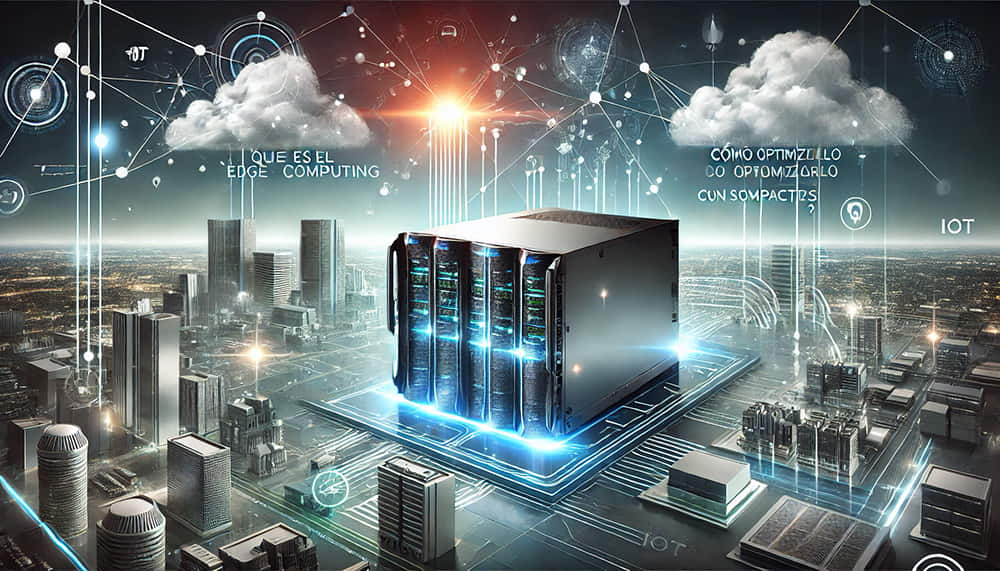Edge computing is revolutionizing the way data is processed and handled in modern applications, reducing latency and improving efficiency. This approach is enhanced by compact servers, which offer an ideal combination of performance and portability. In this article, we explore what edge computing is, the role of compact servers, and how to configure them to optimize their use.
Discover all our servers at the following link.
What is Edge Computing and Why is it Important?
Edge computing brings data processing closer to where it is generated, reducing the need to transfer large amounts of data to remote centers.
Definition and advantages of local processing
Edge computing involves running processing tasks directly on local devices or servers close to the end user. Its main advantages include:
- Reduced latency: Faster responses when processing data locally.
- Bandwidth efficiency: Decreased data transfer to the cloud.
- Improved privacy: Less exposure of sensitive data by keeping it on the local device or network.
Differences between edge computing and cloud computing
- Edge computing: Distributed processing on local or peripheral nodes, ideal for real-time tasks.
- Cloud computing: Centralized processing in large data centers, better for mass storage and analysis tasks.
Both models are complementary, but edge computing is essential for applications that demand speed and autonomy.
The Role of Compact Servers in Edge Computing
Compact servers are essential for implementing edge computing solutions due to their optimized design and specific capabilities.
Benefits: Small size and energy efficiency
- Small size: Compact servers can be installed in places with space limitations, such as light poles, vehicles or drones.
- Energy efficiency: Its design allows it to operate with lower electrical consumption, ideal for environments with limited resources.
Applications in IoT and real-time data analysis
- IoT (Internet of Things): Processes data from sensors and connected devices locally, reducing dependence on the cloud.
- Real-time analysis: Facilitates immediate processing in applications such as video surveillance, industrial monitoring and remote medical assistance.
How to Set Up an Edge Computing Infrastructure
To take full advantage of edge computing, it is crucial to Setting up an efficient, well-designed infrastructure.
Selecting the ideal compact server
When choosing a compact server, consider:
- Performance: Efficient processors such as the Intel Xeon-D or AMD EPYC Embedded for demanding workloads.
- Endurance: Models designed to operate in harsh conditions, such as the Dell PowerEdge XE2420 or the HPE Edgeline EL8000.
- Connectivity: Support for multiple interfaces, such as Ethernet, Wi-Fi, and 5G, to ensure constant communication.
Network and storage optimization
- Local networks: Set up low-latency networks, such as high-speed Ethernet connections or 5G for mobile applications.
- Storage: Use NVMe SSDs to quickly process and save data on the local node.
Edge Computing Use Cases with Compact Servers
Edge computing with compact servers has practical applications in a wide variety of industries.
Data processing in smart factories
- Industrial automation: Analyze real-time data from machinery to predict failures and optimize production.
- Local control: Implement systems that react instantly to changes in the work environment.
Use in smart cities and autonomous vehicles
- Smart cities: Monitor and manage urban services such as lighting, traffic, and security with local servers.
- Autonomous vehicles: Process data from sensors and cameras directly in the vehicle to make decisions in fractions of a second.
Edge computing, combined with compact servers, offers a powerful solution to handle tasks that demand speed, autonomy, and efficiency. From factory automation to implementation in smart cities, this technology is driving innovation in numerous sectors. Harness the power of edge computing to take your projects to the next level!







